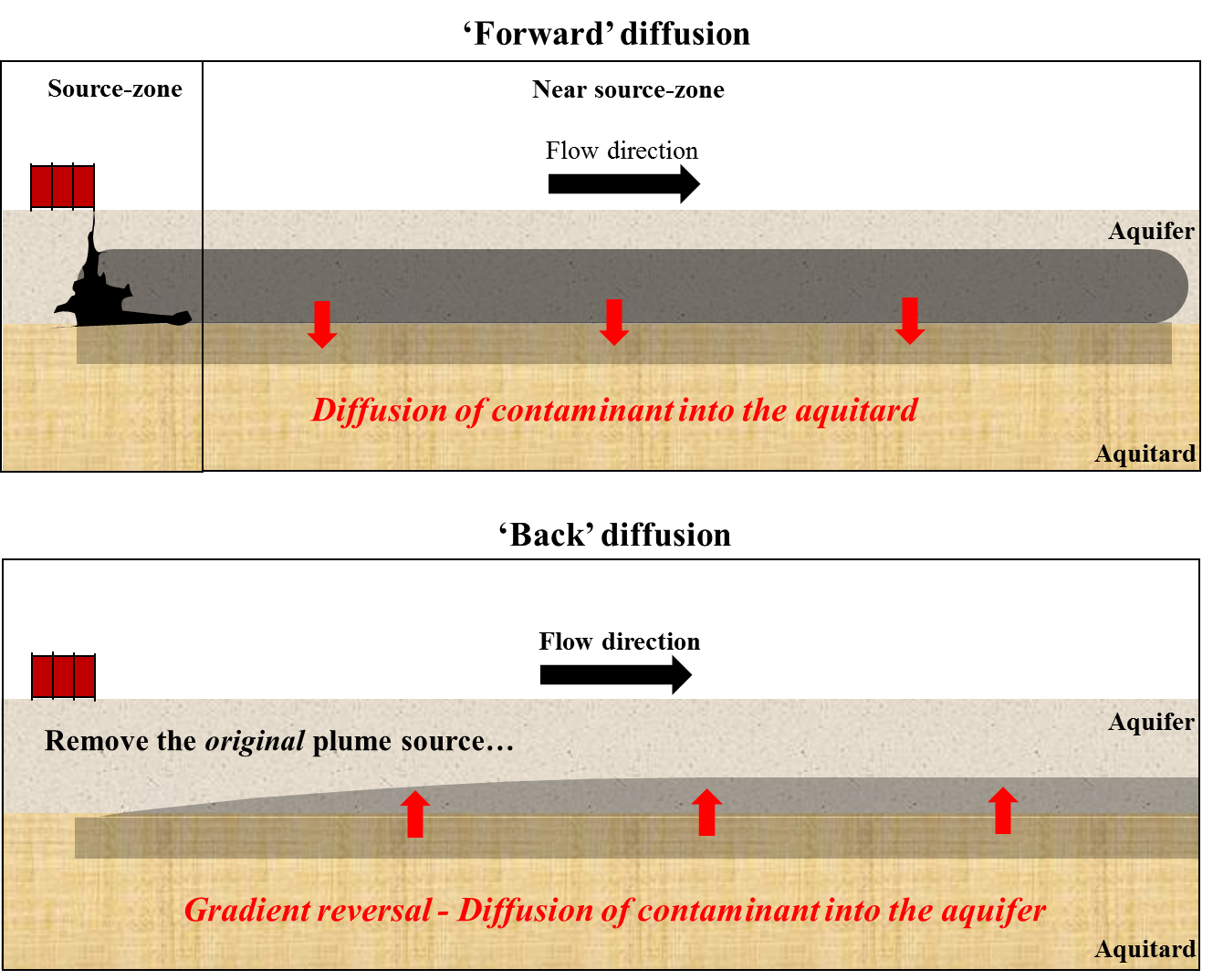Post-doctoral associate Minjune Yang studied solute transport in aquitards, a critical factor for groundwater contaminant remediation and also more broadly solute exchange between subsurface layers encountered throughout geosciences disciplines. Other specific applications include landfill liners and nuclear waste repositories.
Here is why he thinks you should read these papers!
Forward and back diffusion through argillaceous formations, Water Resources Research
Diffusion problems in finite domains are notoriously hard to tackle. We present a synthesis of analytical solutions for solving these problems and we apply them to diffusion data that spans a large range of scales, both length (2 cm to 40 0m) and temporal (days to millions of years).
Most analytical solutions assume that the world is semi-infinite, but in many scenarios it is important to recognize the finiteness of reality. A broad set of analytical solutions for diffusion can be found in the heat transport literature and while some are widely used for solute transport, solutions based on the method of images are less well known. This work synthesizes a wide array of analytical solutions and provides an easy and direct expression for solute diffusion in porous media. In addition, we adopted the solutions for solute concentration profiles in aquitards into flux equations to investigate solute concentrations in aquifers (e.g., breakthrough curves). The solutions were validated with new laboratory experimental data and the solutions were further applied to a collection of field data.

Figure1. Schematics of forward and back diffusion for an aquitard bounded by two aquifers at top and bottom. A finite aquitard domain with two identical boundary conditions (cases (a) FN and (b) BN) and with different boundary condition (cases (c) FF and (d) BF).

Figure 2. Schematics, simulated and measured concentration profiles.
Field-scale forward and back diffusion through low-permeability zones, Journal of Contaminant Hydrology
This work demonstrates how measured field data can be used to help understand and manage contaminated sites. The issue of back diffusion is of significant current interest at contaminated aquifer sites. We evaluate the hypothesis that field-measured data aquitard concentration profiles can provide characteristic signatures of plume life cycle stage. Based on the shapes of the concentration profiles in the aquitard, we can describe the timing of the transitions between aquifer source zone dissolution, dissolution combined with back diffusion form an aquitard, and back diffusion alone. The hypothesis is evaluated using 14 cores collected at 3 contaminated field sites. Analytical solutions were applied to aquitard solute concentration profiles and aquifer breakthrough curves. The results demonstrate strong interaction between source dissolution and back diffusion. This work supports assessment of plume persistence and human exposure risk. Furthermore, this study addresses proper timing of site management actions in relation to both aquifers and aquitards. Although we applied our solutions to DNAPL sites, this study has broader fundamental applicability to other problems such as landfill liners and nuclear waste repositories.
Figure 3. Measured and simulated TCE concentration profiles with estimated plume histories for (a) ML-10 in the 3 m low-permeability zone. Plume history is estimated by linear source depletion and exponenetial source depletion. Simulated and measured TCE concentrations during three stages at two mornitoring wells (b) MW-01 and (c) MW-54 at Connecticut site, and (d) simulated breakthough curves with plume persistence for MW-01 and MW-54 for 100 years.

